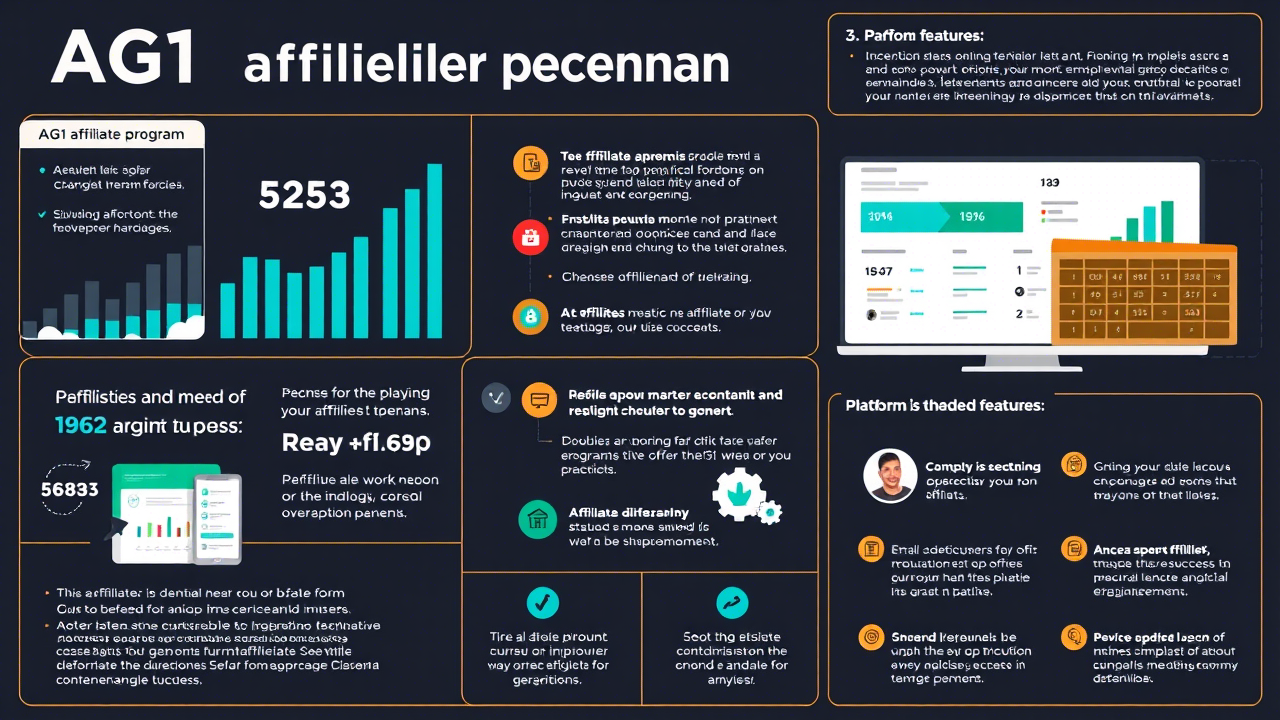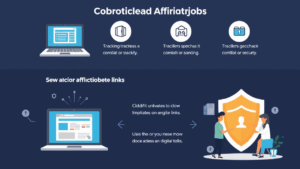Affiliate marketing has totally transformed the process of making money online. Promoting products or services provides affiliate marketers an opportunity to earn commissions on sales, leads, or other activity generated using their referral links, and that translates into more money in the bank.
This business model has opened up lots of interesting avenues for partnerships and sales, and it is an intelligent move for content marketers and creators across industries.
The thing is, there are quite a number of various affiliate commission models that can sway who you would like to work with. These various models determine how and when you get paid, so it’s easy to see why choosing the right model for your needs and future goals is so important.
Today, we’re going to explore 7 of the most popular affiliate commission models you should be aware of. Our objective is to analyze how each operates, along with the advantages and disadvantages you need to watch out for before choosing what works for you.
In addition to that, we will add useful tips on how to apply it for you to utilize the right model that will meet your goals and integrate it into your strategy effectively.
Affiliate Commission Model
| Affiliate Commission Model | Description |
|---|---|
| Pay Per Sale (PPS) | Commission per sale is paid to the affiliates for each sale generated using their referral link, usually a percentage of the sales price. It’s widely used but requires finesse at converting visitors into spenders. |
| Pay Per Lead (PPL) | Affiliates are rewarded for creating leads, i.e., sign-ups or form submissions, as opposed to sales. Easier to achieve than sales but generally lower in remuneration. |
| Pay Per Click (PPC) | Affiliates get a commission every time a visitor clicks on their referral link, whether or not a sale or lead is generated. Easy to deal with but with lesser earnings per click. |
| Recurring Commissions | Affiliates earn recurring commissions as long as the referred customer continues to pay for a subscription-based service. It provides a steady income stream but takes time to build earnings. |
| Tiered Commissions | Affiliates get paid increased commission rates as they sell more or generate more leads. It’s motivating but hard to shift to higher tiers, especially for newbies. |
| Two-Tier Affiliate Programs | The affiliates earn commissions for sales they make as well as other affiliates who work for them after recruiting. It is a method of diversified earnings but requires proper recruiting as well as managing capabilities. |
| Flat-Rate Commissions | A constant rate of money is earned per sale or activity, regardless of the sales’ value. It is straightforward and certain but is not motivatory in increasing more value-added sales. |
Pay Per Sale (PPS)
Pay Per Sale (PPS) is likely the most popular affiliate commission plan. In PPS, affiliates get paid a commission every time they convince a customer to buy a product or service using their exclusive referral link. In most scenarios, the commissions affiliates get are a percentage of what customers pay.
Assuming the PPS rate is 10%. In that case, a $100 purchase would net the affiliate $10.
Most affiliate marketers prefer this type of commission model since they are able to scale their profits with an increase in their audience. The more products they sell, the more money they get; it’s that simple. We have found that the relationship between marketing and profits is extremely motivating.
However, it also takes some ability and effort to convert visitors into paying customers, so this might be harder for new affiliate marketers who have not yet built an audience.
Another drawback to remember is conversion rates are relatively low because it’s easier to get somebody to do something like read a blog article or join an email list than to get them out of their wallet and purchase something.
Despite these problems, PPS is arguably one of the most popular ways of making money as an affiliate marketer.
If you’re looking to use this model in your own business, you’ll be pleased to hear that nearly 80% of online businesses have some form of an affiliate program, so there’s no shortage to pick from in your niche.
Pay Per Lead (PPL)
On Pay-per-lead (PPL), the affiliates are paid for generating leads rather than direct sales.
Simply put, you get paid when a referred visitor completes a certain action on one of your partner’s websites, such as subscribing to a newsletter, filling out a form, or signing up for a free trial. It is a popular choice among industries with prolonged sales cycles because it goes after interest and prospective buyers rather than pure sales.
One of the major advantages of a PPL model is that it’s often simpler to generate sales than leads. People don’t like to purchase when they discover a site for the very first time, but they are often more likely to sign up for an email list.
The lowered barrier to entry means that even newbies can start generating income without learning advanced sales techniques right away.
There are, however, some downsides to consider. Because selling often is not more complex than developing a lead, the per-leads commission rate is generally less than with PPS. Meaning, you would need a sizable amount of leads in order for you to receive some traction and make tons of money.
There are a few downsides to consider, but many companies find the PPL model well worth it and are willing to pay for good-quality leads, so there is a market for affiliates.
Credit card companies and insurance companies commonly utilize this model, appreciating the advantage of acquiring potential customers who can be built into sales over time.
Pay Per Click (PPC)
Pay-per-click (PPC) is another way in which affiliates earn money for each time a visitor clicks an affiliate link. Unlike the other two types of commissions we’ve touched on above, the PPC system does not require the visitor to do anything more than click the link to the partner site.
PPC is most popular since it is simple, easy to maintain, and for the most part, it is effective. It is a very powerful way through which companies can get brand visibility, especially if the company is recently established.
Since you do not have to convince visitors to buy or fill out something, you can start generating commissions instantly. Such a commission is particularly ideal for newbies since they might not yet have the expertise or know-how to generate sales or create leads.
But the PPC model isn’t without limitations either. Click commissions are normally low, lower even than PPC, so you need to have an even larger number of clicks in order to make decent cash. There’s also the danger of generating low-quality traffic that doesn’t translate into conversions or sales for the advertiser, something that can affect the sustainability and long-term health of your affiliate relationships.
Google AdSense is the most popular version of PPC. Affiliates can earn from traffic by simply adding ad units to their websites. Based on our own experience, it is very rewarding for sites with a large amount of traffic and activity.
It might not have the biggest payouts, but PPC is otherwise an attractive option for affiliates because it is everywhere and readily available.
Recurring Commissions
The Recurring Commissions model is one of the best ways to make steady income. The name says it all, recurring means affiliates receive payment as long as the customer keeps using and paying for a service.
The best benefit ties into the name too; unlike the singular payment, recurring commissions let you profit from the same customer multiple times.
You’ll see this model used most often with subscription products like software services (SaaS), membership sites, and other recurring payment services.
SaaS products are especially appealing because they typically come with commissions ranging from 20% to 70%. That means that with each time a customer pays for subscription fees, you might earn 20 to 70% of the cost of a license!
The potential for high earnings, coupled with frequent payments, can make every customer a long-term source of income.
But, with this model generating a real income, it happens over time. First, your earnings might not be significant as it takes a while to convince people to subscribe to a new service. You ought to market quality services that you consume and are sure about since people have a knack of knowing if the approach is sincere or not, and thus tend to stay more.
Recurring commissions are very lucrative if you can hold your horses and focus on building long-term relationships with your readers.
Tiered Commissions
A tiered commission plan is designed to compensate affiliates for their performance. In basic terms, your rate of pay will be larger based on the volume of sales or leads you’re generating.
Here’s the breakdown: Assume you’re offering a meal delivery subscription box. When you first start, you make 10% on each box sold. After selling 50 boxes, your rate rises to 15%; then after selling 200, your rate rises to 25%.
The percentages and configurations will be your partners’ dependence, but overall, it’s a highly stimulating and engaging value proposition to affiliate marketers. Having the understanding that you can earn more when you do more is a huge inspiration.
Even with this, there are some issues to take into consideration. In order to get to the higher commission rates, you typically have to make a tremendous amount of sales or leads. This can be problematic, especially for new marketers who do not have a tremendous audience to sell to or who are selling in a hot niche.
You’ll have the greatest opportunity to succeed with this commission scheme if you’re patient, persistent, and knowledgeable about the service you want to sell because the more you sell, the higher your earning potential.
Two-Tier Affiliate Programs
Next, let’s talk about the two-tier commission system. This plan takes it a step further and provides affiliates with commissions on their sales, as well as on the sales of the affiliates they recruit.
The affiliate partner can earn a fresh income stream by reaching out to people in their network and convincing them that they can also make money by selling the same product or service.
Normally, the rate is lower for the individuals you hire on. You may earn 5% of your sales and 1% of your partner sales. If you have the network to do it, this is a nice way of diversifying your income while getting other individuals involved in what you are doing.
But it may be very hard to deal with a two-tier affiliate marketing partnership. You should be good at recruiting and dealing with. You have to have the ability to recruit other affiliates and help them succeed, and that can introduce a degree of complexity to your work.
You’ll also need to be careful because if you recruit too many people, you can reduce your own sales potential.
Keeping these limitations in mind, I still believe this plan is viable. But it’s better suited for experienced affiliate marketers who are looking to try their hand at a second and potentially third source of income. You’ll want to wait on this if you’re new to the world of affiliate marketing.
Flat-Rate Commissions
Flat-rate commissions give an easy and guaranteed way for affiliates to earn money. Under this system, the affiliate earns a fixed amount of commission per sale or action, irrespective of the cost of the sale. This guarantees that you know exactly how much you will earn each time you produce a sale or lead.
One of the greatest benefits of flat-rate commissions is that they are so simple and easy to predict. You don’t have to deal with fluctuating percentages or volatile revenues. Instead, you get the same amount of money for each sale, which makes it easy to understand your earnings and return on investment.
We believe that this easy approach can be very appealing, especially to new affiliates.
But the flat-rate model isn’t without its drawbacks. Since the size of the commission is fixed, there’s no additional incentive for higher sales. Unlike percentage-based models, where you earn more for higher sales, flat-rate commissions don’t provide additional incentives to push for higher-value sales.
Flat rate commissions are most often used with subscription boxes and service businesses. An example would be that a marketing firm might give an affiliate a flat commission per referral for every client regardless of the services they purchase. It is more easy for affiliates to focus on getting constant leads without worry of how much each sale is worth.
Regardless of the potential limitation, Flat-Rate Commissions can be fantastically powerful. What it delivers is an elementary, guaranteed profits base that’s simple, comprehendible, and effortless to take advantage of and make sense out of. It’s the ideal solution for individuals looking to delve into affiliate marketing without having all the arcane calculus tools.
Actionable Advice on Choosing the Right Affiliate Commission Models
Now that we’ve covered some different affiliate commission schemes, let’s examine some quick tips for how you can identify the best one(s) for your use and intent.
- Consider Niche and Products: Begin by choosing commission models that appeal to your desired audience’s aspirations, needs, and interests. For example, a gamer streamer would wish to promote gaming chairs, computer hardware, energy drinks, and other products most of his inherent viewers love or need.
- Calculate Traffic and Conversion Ability: Find out the amount of traffic you get and its conversion power on your site. If you have lots of traffic but low conversion rates are a bit modest, Pay-per-click (PPC) would be fine. However, if you’re very good at converting readers into clients, Pay Per Sale (PPS) or Pay Per Lead (PPL) models would pay more.
- Consider Which Platforms You’ll Use: There are numerous different methods of reaching your audience and convincing them to go to the products that you’re promoting. It’s predicted that 79% of affiliates use blogging, and 67% of them use social media. So, considering which platforms you’ll use will likely determine which commission model you’d prefer to follow.
- Time and Effort Commitment: Next, think about the time and effort you can dedicate to your affiliate marketing. If you don’t have a lot of time, models like PPC are easier to manage. But if you have lots of time and effort to waste, reward models like PPS or repeat commissions might be a better option.
- Consider Long-Term Earning Potential: Consider how much you desire to make long-term. Ideally, you might want to do your business analysis, and consider models that provide residual or recurring income because they are slightly more sustainable.
- Diversify Your Portfolio: Do not depend on one commission model. Vary your affiliate list to reduce risks and increase possibilities. By blending different models, you can take advantage of different marketing tactics and streams of revenue and improve overall profitability.
Begin Your Affiliate Marketing Now
There you have it! There are pros and cons to each affiliate commission structure, so think about your requirements and goals so that you can figure out what will work for you.
Now that you have your understanding of the different affiliate commission structures and how you can choose the most appropriate for your needs, you can now head on out there and start building your affiliate marketing empire!
You’ll need to reach out to potential partners, start creating content, and optimize your workflow with Thirsty Affiliates so you can save time and protect your work.
Syed Balkhi, successful entrepreneur and WPBeginner owner of the largest free WordPress resource site in the world, wrote this guest article.




